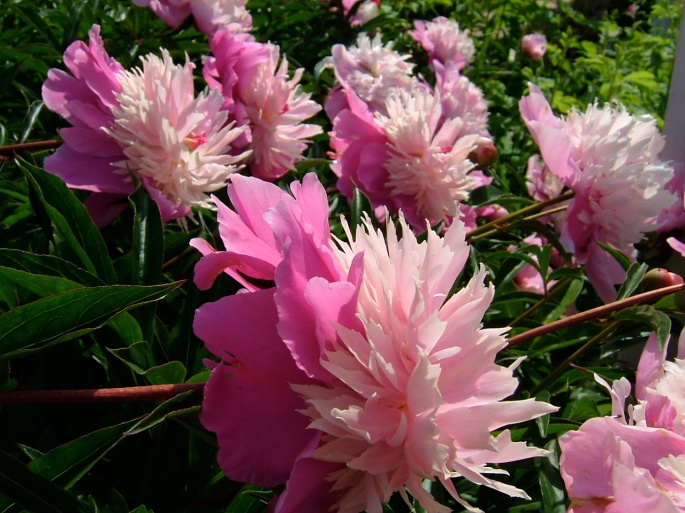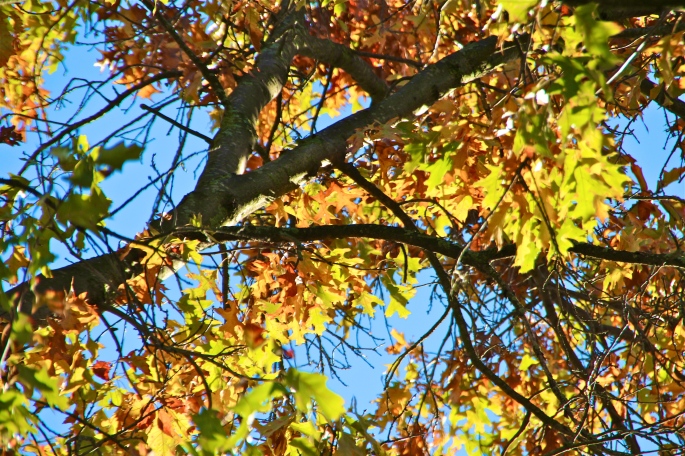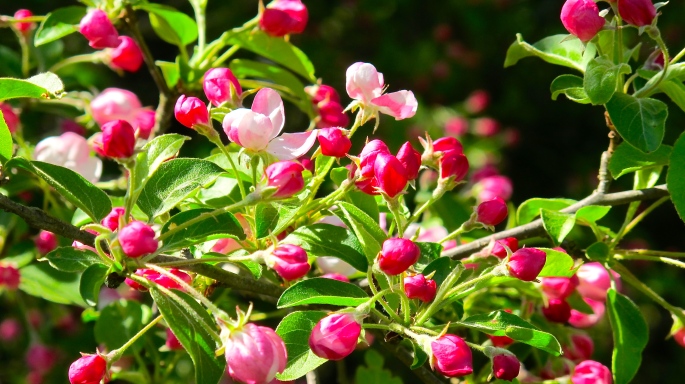 A long-time friend lent me Let Your Life Speak. It’s just a slip of a book by an author I’d never heard of, but the book was so provocative that I started reading it again…aloud this time—to Alan on our way north last weekend. Alan was also drawn in and asked who the author was. But, Parker J. Palmer was not an unknown name to Alan, as this little jewel of a book has been very influential in the lives of a number of the psychiatrists with whom he works.
A long-time friend lent me Let Your Life Speak. It’s just a slip of a book by an author I’d never heard of, but the book was so provocative that I started reading it again…aloud this time—to Alan on our way north last weekend. Alan was also drawn in and asked who the author was. But, Parker J. Palmer was not an unknown name to Alan, as this little jewel of a book has been very influential in the lives of a number of the psychiatrists with whom he works.
And so, after reading the book twice, I now want to commend it to you, particularly if you’re not sure you’ve found the right vocation yet and need a little inner light, or if you fail to appreciate that you even have an inner life or need an inner light, or if (like me) you normally refuse to face the heart of darkness within you, or if (not like me) you struggle with depression.
Palmer encourages us to consciously develop our inner life through practicing skills like “journaling, reflective reading, spiritual friendship, meditation, and prayer.” He points out that contrary to popular myth, we humans are not infinitely capable and need to understand our limitations and liabilities as well as our competencies as we search for our vocation (which in its highest sense is a “calling” [vocalization] we receive from God based on whom He’s created us to be).
Parker points out that the inner work of the soul needs to be done both privately and in community. He writes with disarming honesty about his own years of suffering with clinical depression, and his simple eloquence has given me my first tiny taste of hope for how to support someone in such a struggle. “One of the hardest things we must do sometimes is to be present to another person’s pain without trying to ‘fix’ it, to simply stand respectfully at the edge of that person’s mystery and misery. Standing there, we feel useless and powerless, which is exactly how a depressed person feels—and our unconscious need as Job’s comforters is to reassure ourselves that we are not like the sad soul before us.” (However, of course, the solution is just to “be” there with them, feeling inadequate, rather than trying to “fix” them: “He never tried to invade my awful inwardness with false comfort or advice; he simply stood on its boundaries, modeling the respect for me and my journey—and the courage to let it be—that I myself needed if I were to endure.”) Parker goes on to quote Rainer Maria Rilke:
“Love…consists in this,
that two solitudes protect and border and salute each other.”
 As far as my own personal soul development, I was especially challenged to “face the monsters” that lurk in the shadowlands of my soul (and I will quote): “If we, as leaders [and he makes the valid point that as much as we live in community, leadership is our universal vocation], are to cast less shadow and more light, we need to ride certain monsters all the way down, explore the shadows they create, and experience the transformation that can come as we ‘get into’ our own spiritual lives.” Just to whet your appetite, here are five monsters that he recommends dealing with:
As far as my own personal soul development, I was especially challenged to “face the monsters” that lurk in the shadowlands of my soul (and I will quote): “If we, as leaders [and he makes the valid point that as much as we live in community, leadership is our universal vocation], are to cast less shadow and more light, we need to ride certain monsters all the way down, explore the shadows they create, and experience the transformation that can come as we ‘get into’ our own spiritual lives.” Just to whet your appetite, here are five monsters that he recommends dealing with:
1. “Insecurity about identity and worth.”
2. “The belief that the universe is a battleground, hostile to human interests.”
3. “Functional atheism” (“ultimate responsibility for everything rests with us”)
4. “Fear, especially our fear of the natural chaos of life.” (He claims that “chaos is the precondition to creativity.” I’m not so sure about that, but I do believe chaos is at least one precondition for creativity.)
5. “The denial of death and the fear of failure.” (Fear often drives us to either try to “fix” or abandon one another. Allow death when the time is right so that new life can emerge.)
The last section of the book is full of poetic beauty likening our soul life to seasons (which I certainly resonate with, having named my blog “Summer Setting…although the name should be changed to something about autumn now). Parker (kindly) starts his soliloquy with autumn: “Autumn is a season of great beauty, but it is also a season of decline: the days grow shorter, the light is suffused, and summer’s abundance decays toward winter’s death. Faced with this inevitable winter, what does nature do in autumn? It scatters the seeds that will bring new growth in the spring—and scatters them with amazing abandon.” … “This hopeful notion that living is hidden within dying is surely enhanced by the visual glories of autumn.” Thomas Merton: “There is in all visible things…a hidden wholeness.” “In a paradox, opposites do not negate each—they cohere in mysterious unity at the heart of reality.”  Winter: “What we get in winter is not weather but divine retribution” —Roy Blount, humorist. “If you can’t get out of it, get into it!” “The winters will drive you crazy until you learn to get into them!” Winter is hard but is also a time of great beauty and clarity. There is an elegance in death if we will only gaze on it…something I personally experienced at the bedside of both my parents as they learned its quiet surrender…and now am observing in the eloquence of a friend’s dying (as written by her family): “Even knowing the best way to comfort her is perplexing at times. But, our eyes are fixed on Him, on the glory set before us. That we would run in such a way that we would win. That we would trust the Lord and acknowledge him. That we would hold tight to the promises; he is faithful. The canvas of this world’s story is splotched with color. Some dark and deep and heavy. Some bright and light and free. And in each moment, we experience only the splotch, that one stroke of a single color on our day, our year, our life. Each splotch and stroke is crucial—even intentional—to make the canvas come alive, to make a stunning, complete work of art. Our hands are messy in the deep grays of grief and the blackness of looming loss. But our eyes are bright as we look expectantly toward the final masterpiece and get to see the beauty found in the shadows.”
Winter: “What we get in winter is not weather but divine retribution” —Roy Blount, humorist. “If you can’t get out of it, get into it!” “The winters will drive you crazy until you learn to get into them!” Winter is hard but is also a time of great beauty and clarity. There is an elegance in death if we will only gaze on it…something I personally experienced at the bedside of both my parents as they learned its quiet surrender…and now am observing in the eloquence of a friend’s dying (as written by her family): “Even knowing the best way to comfort her is perplexing at times. But, our eyes are fixed on Him, on the glory set before us. That we would run in such a way that we would win. That we would trust the Lord and acknowledge him. That we would hold tight to the promises; he is faithful. The canvas of this world’s story is splotched with color. Some dark and deep and heavy. Some bright and light and free. And in each moment, we experience only the splotch, that one stroke of a single color on our day, our year, our life. Each splotch and stroke is crucial—even intentional—to make the canvas come alive, to make a stunning, complete work of art. Our hands are messy in the deep grays of grief and the blackness of looming loss. But our eyes are bright as we look expectantly toward the final masterpiece and get to see the beauty found in the shadows.”
Sorry this is so long, but I’m sure you can feel how much the book (and my friend’s dying) is impacting me.
Spring muck: “humus,” comes from the same root as “humility;” humility is the seedbed for life and growth. “Perhaps we are meant to yield to this flamboyance [springtime], to understand that life is not always to be measured and meted as winter compels us to do but to be spent from time to time in a riot of color and growth.” “If we want to save our lives, we cannot cling to them but must spend them with abandon.”
Summer: “Authentic abundance dos not lie in secured stockpiles of food or cash or influence or affection but in belonging to a community where we can give those goods to others who need them—and receive them from others when we are in need.”
And on and on. There’s so much in this little epistle, and if the few bites I’ve shared feed your soul, I hope some day you’ll find time to read the entire book!
“No man stood with me, but all men forsook me…Notwithstanding the Lord stood with me, and strengthened me (2 Timothy 4:16-17). 
